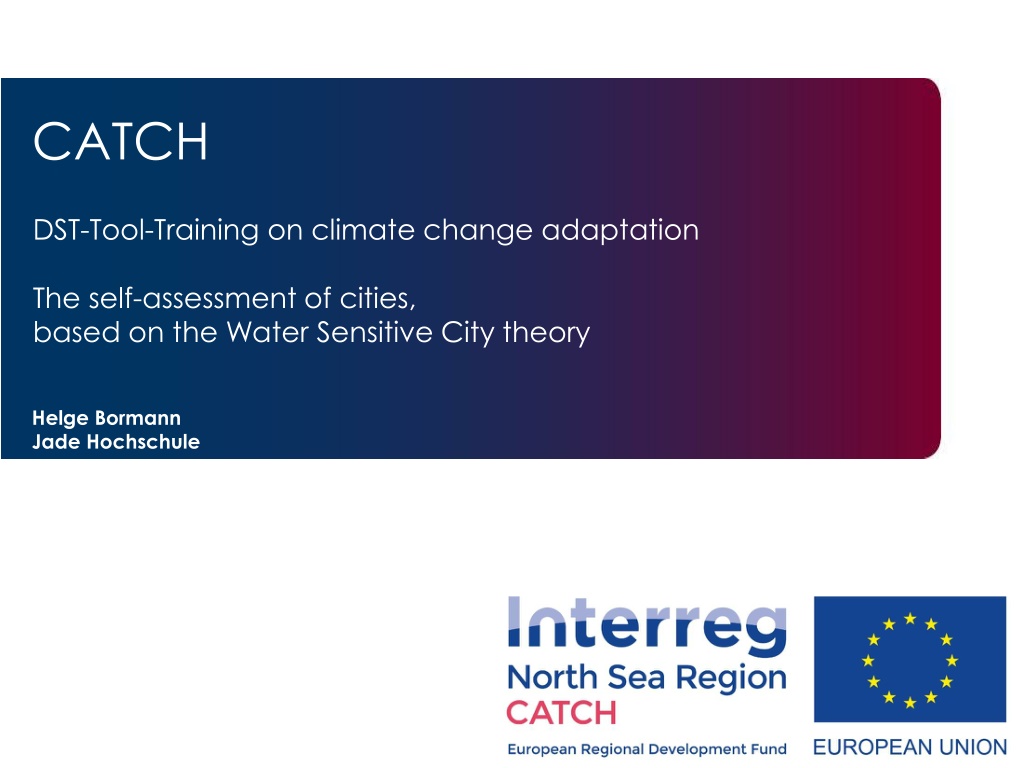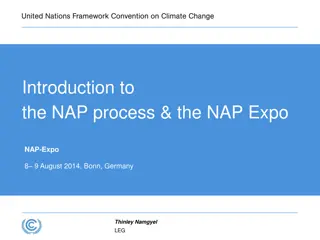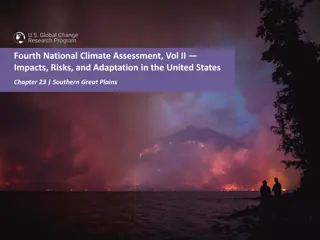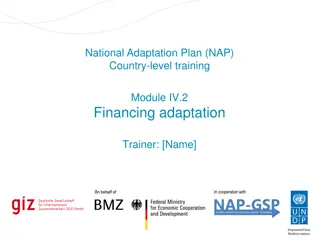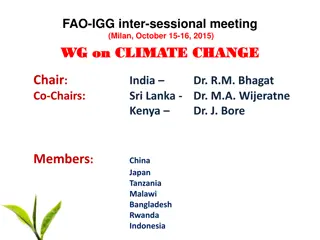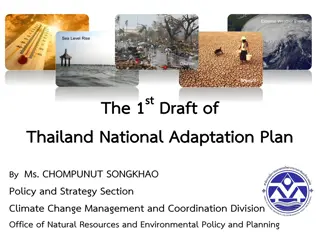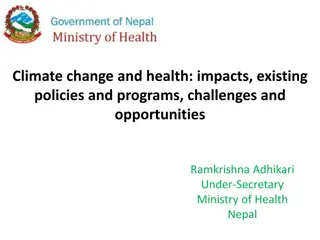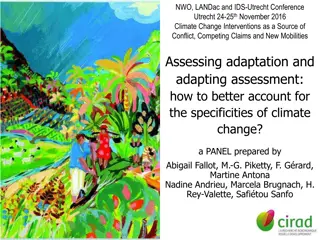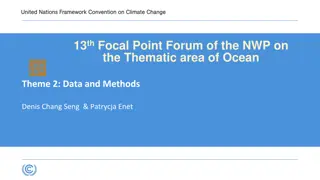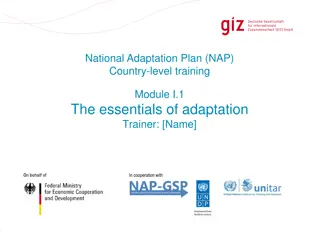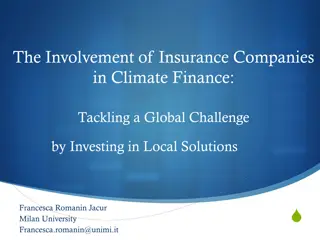The Water Sensitive City Theory: Climate Change Adaptation Approach
The Water Sensitive City Theory explores how cities can evolve into integrated, adaptive, and climate-resilient water systems. It emphasizes restoring natural water balance, providing ecosystem services, and fostering water-sensitive communities. This approach is crucial for climate change adaptation as it promotes integrative, holistic, flexible, social, and nature-based solutions, aligning urban water systems with environmental sustainability. Adjusting the concept to the North Sea Region's conditions is essential due to increasing flood risks and potential future challenges.
- Water Sensitive City Theory
- Climate Change Adaptation
- Urban Water Systems
- Climate Resilience
- Integrative Solutions
Download Presentation

Please find below an Image/Link to download the presentation.
The content on the website is provided AS IS for your information and personal use only. It may not be sold, licensed, or shared on other websites without obtaining consent from the author. Download presentation by click this link. If you encounter any issues during the download, it is possible that the publisher has removed the file from their server.
E N D
Presentation Transcript
CATCH DST-Tool-Training on climate change adaptation The self-assessment of cities, based on the Water Sensitive City theory Helge Bormann Jade Hochschule
The Water Sensitive City Theory An approach from Australia Historical background Assumption of the development of a socio-technological regime (over time) Cities started with sectoral solutions, addressing the (at that time) most important socio-cultural drivers: - water supply systems - sewage schemes, responding to health issues - drainage and channelization, responding to flood events Later, integrative solutions were needed to tackle new challenges (e.g., water quality issues) Such development needs to go further to be able to address limited resources and climate change adequately Description of city states, following this development
The Water Sensitive City Theory An approach from Australia The transition scheme Wong and Brown (2008)
The Water Sensitive City Theory An approach from Australia The different pillars - three principles that help cities to evolve from an engineered urban water system to an integrated adaptive and climate resilient water system Cities as water supply catchments: The urban water system is often part of a larger catchment area. The intensive exploitation of the urban landscape resulted in the progressive decrease of the natural water system to the detriment of the surrounding region. The goal is to restore the water balance within these regions. Cities providing ecosystem services: The same water that poses the biggest threat to society also brings life and energy to the cities. Ecological services are the benefits that people derive from ecosystems. A river area for instance can be used multifunctional for flood protection, groundwater recharge, recreation and for the improvement of the quality of live. Cities comprising water sensitive communities and networks: The implementation of integrated solutions requires improved perception of the benefits from decision makers, businesses and the public across multiple constituencies and levels of governance. Therefore collaboration is a key.
The Water Sensitive City Theory An approach from Australia Why is such approach useful for climate change adaptation? Climate change adaptation needs to be Integrative Holistic Flexible Social Anticipating Nature based
The Water Sensitive City Theory An approach from Australia Adjusting the approach to the North Sea Region conditions Focusing on current challenges across the NSR Consider also possible future challenges of the NSR More Floods than droughts in history Increasing flood risk in future May be more droughts in future Water quality issues Reflecting on such regional characteristics in the city self assessment
The Water Sensitive City Theory An approach from Australia Indicators for the three pillars Cities as water supply catchments: - Evaluating space for infiltration and water storage - Analysing existing water infrastructure and maintenance - Checking availability of hazard and risk maps Cities providing ecosystem services: - Evaluating the qualitative and quantitative status of urban water bodies - Assessing the status of urban habitats and green-blue structures - Protecting vulnerable parts of the urban system Cities comprising water sensitive communities and networks: - Evaluating organization and regulation on urban scale - Analysing the urban governance - Assessing participation and (risk) awareness
The self assessment Using the WSC approach for a self assessment Catalogue of questions for the three pillars
The self assessment CATCH Tool
The self assessment CATCH Tool
The self assessment CATCH Tool Assessing the state for the three pillars of WSC
The self assessment CATCH Tool Answering questions by selecting pre-defined answer Cities as water supply catchments: 9 questions Cities providing ecosystem services: 6 questions Cities comprising water sensitive communities and networks: 8 questions
The self assessment Results: Strengths and weaknesses CATCH transition scheme
The self assessment Results: Strengths and weaknesses Reporting function
The self assessment Results: Benchmark City A City B City C
The self assessment Using the results in the climate adaptation cycle Focus on weaknesses and integration E.g., indicators with lowest scores E.g., pillars with lowest scores Potential for improvement
